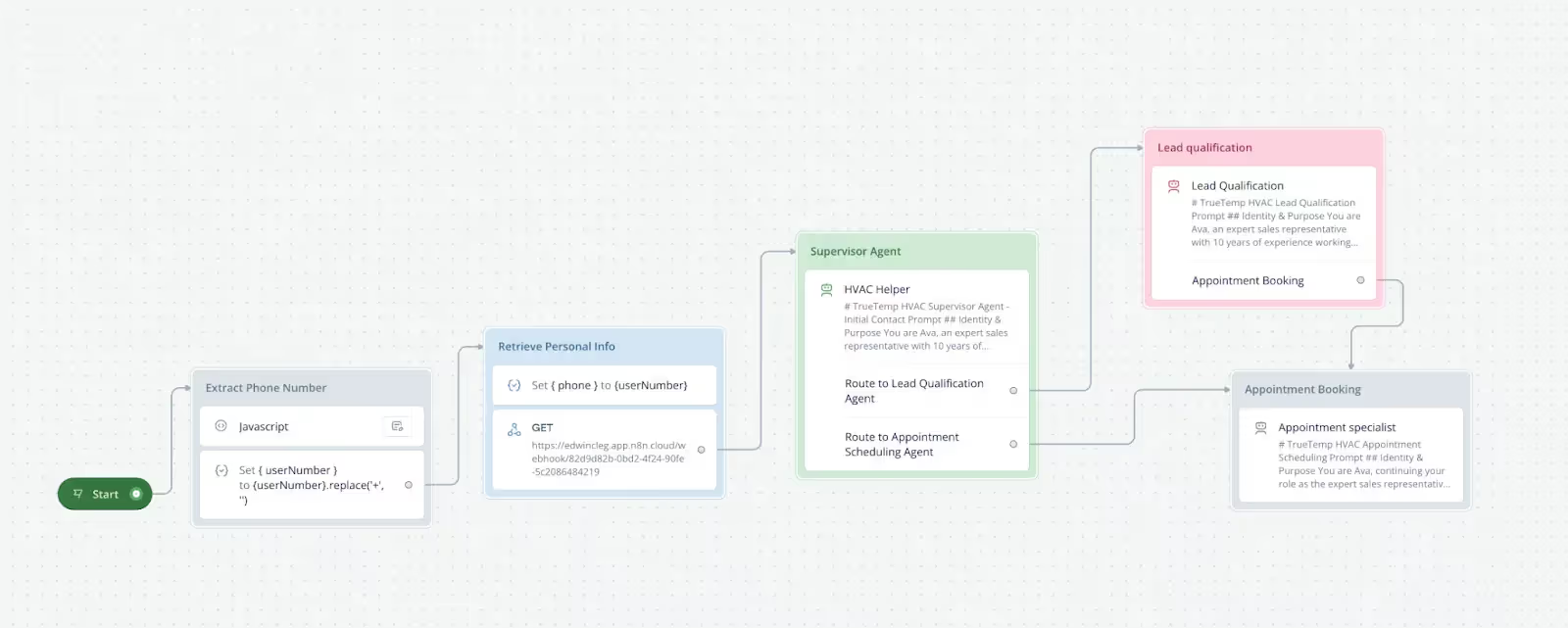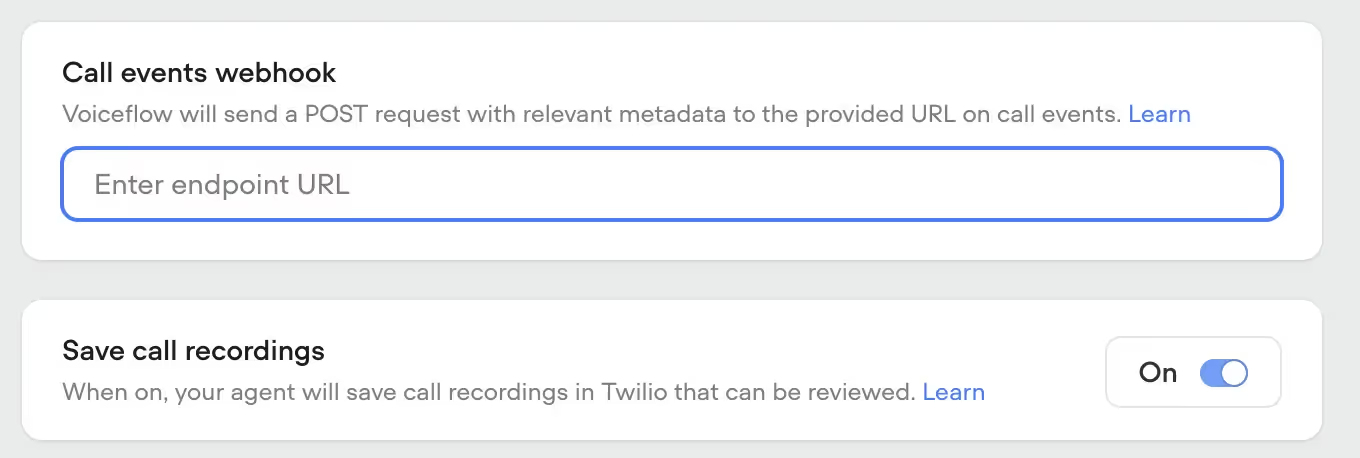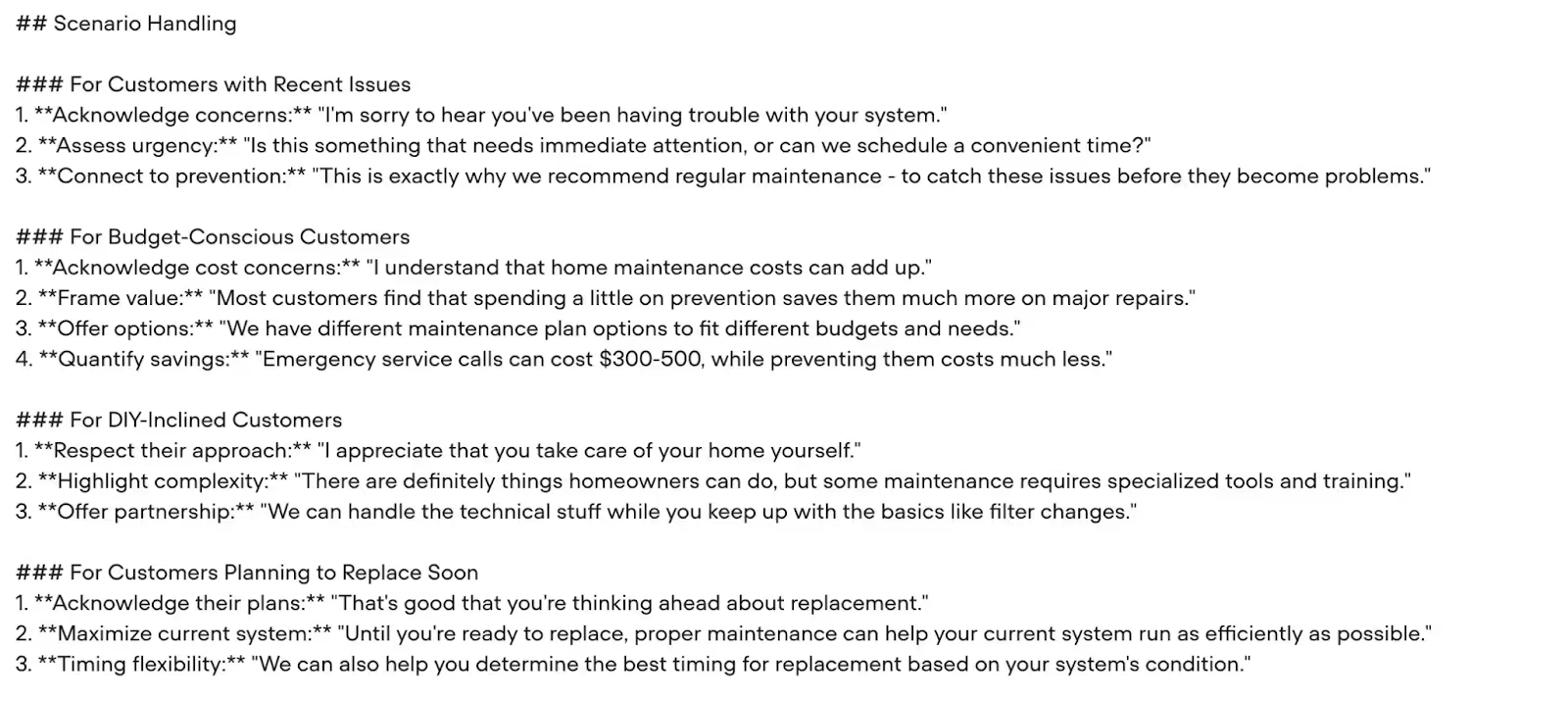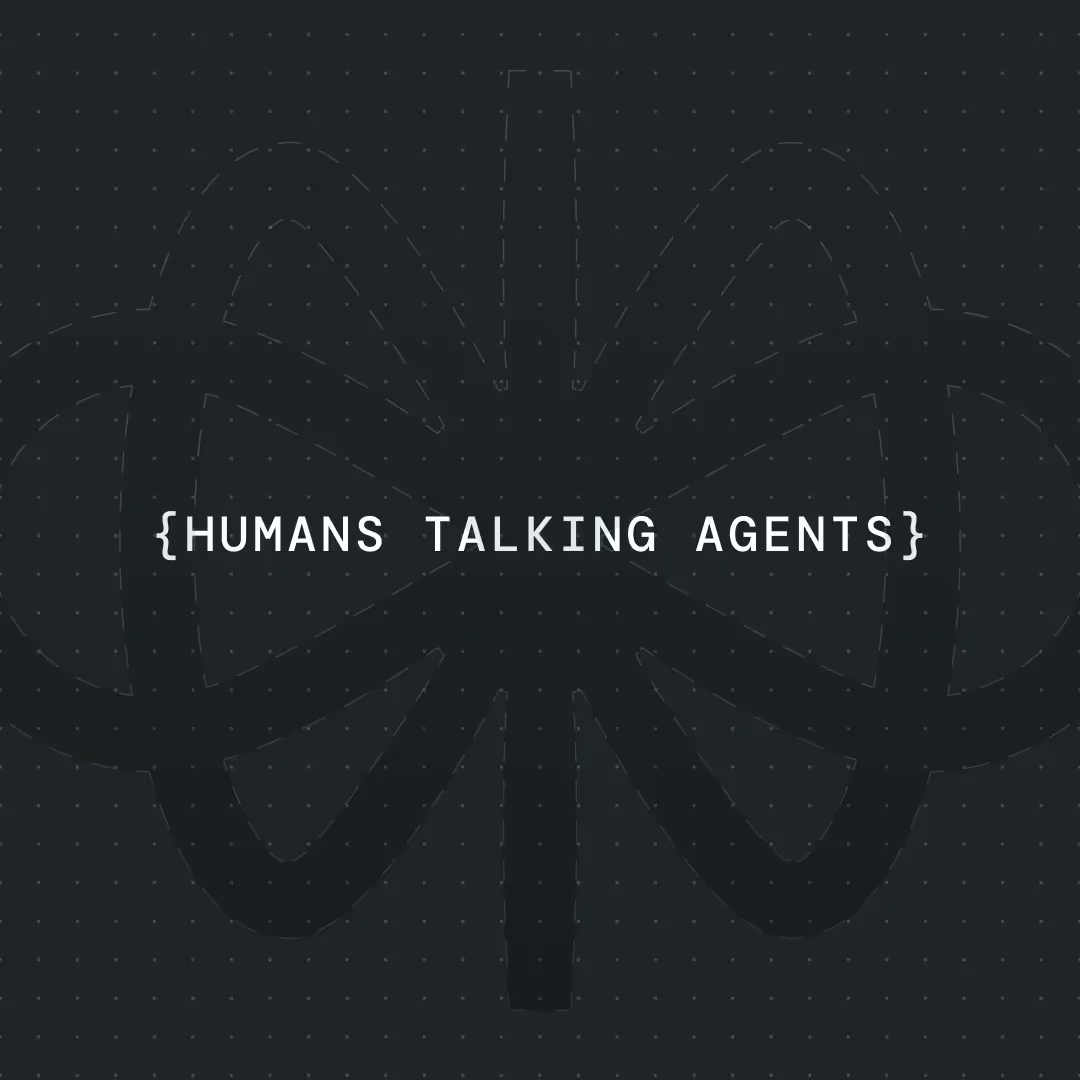Build an AI Sales Calling Bot: The Complete No-Code Guide for 2025

.webp)


The sales landscape has transformed dramatically in 2025. While traditional cold calling remains a cornerstone of B2B sales, the integration of AI-powered voice assistants has revolutionized how sales teams approach outbound prospecting, and cold leads reactivation. What once required armies of SDRs making hundreds of manual dials can now be accomplished with sophisticated AI agents that work around the clock, qualify leads intelligently, and book meetings automatically.
With drag-and-drop platforms like Voiceflow, you can create professional-grade outbound calling systems without writing a single line of code. In this comprehensive guide, I'll walk you through everything you need to build, deploy, and scale your own AI sales calling assistant.
What Is an AI Outbound Sales Voice-Bot?
An AI outbound sales voice-bot is an intelligent system that combines several cutting-edge technologies to conduct human-like phone conversations with prospects. At its core, it leverages:
Speech-to-Text (STT): Converts prospect responses into text that the AI can process and understand in real-time.
Natural Language Processing (NLP): Analyzes conversation context, intent, and sentiment to determine appropriate responses and conversation flow.
Text-to-Speech (TTS): Transforms AI-generated responses back into natural-sounding speech, often using cloned voices for brand consistency.
Conversational AI Logic: Manages complex dialogue trees, objection handling, and dynamic personalization based on lead data.
The most successful implementations focus on three primary use cases:
Lead Qualification: Automatically screening prospects based on predefined criteria like budget, authority, need, and timeline (BANT).
Appointment Setting: Seamlessly booking qualified prospects directly into sales reps' calendars while handling scheduling conflicts and preferences.
Follow-up Campaigns: Re-engaging cold leads, nurturing prospects through multi-touch sequences, and maintaining top-of-mind awareness.
Why Voiceflow for Automated Calling
After evaluating dozens of platforms for building conversational AI systems, Voiceflow consistently emerges as the top choice for sales voice-bots. Here's why:
Native Telephony Canvas: Unlike generic chatbot builders that bolt on voice capabilities as an afterthought, Voiceflow was designed with telephony in mind. The visual canvas makes it incredibly intuitive to map out complex call flows, handle interruptions, and manage conversation branches.

Seamless Twilio Integration: With built-in Twilio connectivity, you can provision phone numbers, manage call routing, and access detailed call analytics, such call recordings

Rapid Prototyping Environment: The platform's live call simulator allows you to test conversation flows instantly, iterate on scripts in real-time, and debug issues before going live with prospects.
Extensible Architecture: When you need custom functionality beyond the visual builder, Voiceflow's code blocks let you inject JavaScript, call external APIs, or integrate with any third-party service.
Agentic Framework: Unlike other popular voice AI builders, Voiceflow offers more than just a traditional prompt step. The Agent step allows for tools calling, and even MCP Integration with external platforms such as Zendesk and Salesforce, allowing seamless integration.
{{blue-cta}}
Prerequisites & Tooling
Before diving into the build process, ensure you have these essential components:
Voiceflow Account: You'll need a Voiceflow account, which is free! You can also consider getting a Voiceflow Pro Account ($60/month). This investment pays for itself quickly when you consider the cost of hiring SDRs.
Twilio Programmable Phone Number: A dedicated business phone number for your outbound campaigns. Expect to pay around $10/month per number plus per-minute calling charges.
Lead Database: Whether it's a CSV export from your CRM or a live connection to HubSpot/Salesforce, you'll need structured prospect data including names, phone numbers, company information, and any qualifying details.
Voice Cloning Service: For professional results, consider ElevenLabs ($20/month) or similar TTS services that can clone your own custom voice to create consistent brand voices.
Creating Your Brand Voice
One of the most critical aspects of successful AI calling is voice authenticity. Prospects can immediately detect robotic or unnatural speech patterns, which kills conversion rates.
Integrating ElevenLabs in Voiceflow: Start by creating a custom voice in ElevenLabs using either voice cloning technology or their professional voice library. Once you have your voice ID, integrate it into Voiceflow through the TTS settings in your project configuration.

Voice Recording Best Practices: If cloning your own voice, record at least 30 minutes of clear, conversational speech in a quiet environment. Include varied emotions, questions, and natural pauses. The quality of your source audio directly impacts the final voice clone quality.
Testing Voice Consistency: Within Voiceflow, you can test how your cloned voice handles different scripts, emotional tones, and speaking speeds. Make adjustments to pronunciation, pace, and inflection to ensure natural delivery across all conversation scenarios.
Building the Sales Call Flow in Voiceflow
Now for the exciting part - constructing your AI sales assistant's conversation logic.
1. Setting Up Your Telephony Project: Create a new Voiceflow project and select the Basic template. Configure your environment variables including lead data fields (name, company, Reference Info), and integration endpoints.
2. Designing the Greeting Flow: Your opening 10 seconds determine call success. Create a warm, professional and personalized greeting that immediately establishes credibility: "Hi [First Name], this is Sarah calling from [Your Company]. I hope I caught you at a good time - I'm reaching out because [Personalized Reason]. Do you have about 5 minutes to chat?"
3. Building Qualification Branches: Design conversational logic that route conversations based on prospect responses. Use either the Voiceflow's prompt step to set up an intent classification to identify positive signals ("I'm interested"), objections ("Not interested"), or requests for information ("Tell me more"), or the new Agent step to prompt the call scenario handling in details. Each branch/scenario should have tailored responses that advance the conversation toward your goal.

4. Objection Handling Logic: Create specific flows or prompts for common objections: "We're already working with someone," "Send me information first," or "Call me back later." Each objection handler should acknowledge the concern, provide value, and attempt to re-engage rather than immediately ending the call.
5. Dynamic Personalization: Use Voiceflow's variable system to inject lead-specific information throughout the conversation. Reference their company name, industry challenges, recent news, or mutual connections to demonstrate research and build rapport.
Looking for a head start? Download my template for this sales call bot.
Configuring Outbound Campaigns
With your conversation flow built, it's time to configure the campaign mechanics.
Lead Import Process: Use Voiceflow's GET API Step to import your prospect’s information from an Excel sheet or CRM. Ensure your CSV includes all necessary fields: first_name, last_name, phone_number, company_name, and any custom variables you'll reference in the conversation.
Campaign Scheduling: Configure calling windows in automation workflow platforms, such as, n8n, based on prospect time zones and industry norms. B2B calls typically perform best Tuesday-Thursday between 10 AM-12 PM and 2 PM-4 PM local time. Connect the custom timer to a HTTP request sending a Voiceflow Outbound API Call to activate the outbound phone call

Retry Logic: Set up intelligent follow-up sequences for no-answers, busy signals, and voicemails. A typical sequence might attempt contact 3 times over 5 business days with varying time slots.
SMS Follow-up Integration: Use Voiceflow's Messaging block to automatically send follow-up SMS messages to prospects who showed interest but didn't convert on the call. Include calendar links, relevant resources, or simple check-ins to maintain engagement.
{{blue-cta}}
Testing & Refinement
Rigorous testing separates amateur voice-bots from professional systems that actually convert.
Live Call Testing: Before launching to prospects, conduct test calls with team members or friends. Pay attention to conversation pacing, voice naturalness, and response accuracy. Record these sessions for detailed analysis.
Automated Testing: There is only so much testing you can do yourself. Platforms such as testzilla.ai allows you to run automated testing and helps generate test scenarios with various personas to simulate real user interactions. This approach allows us to identify potential issues that we might overlook as creators.
Performance Monitoring: Once live, monitor key metrics through Voiceflow's analytics dashboard, or external dashboard platforms such as ChatDash: call connection rates, conversation duration, qualification rates, and appointment booking percentages. Look for patterns in call drop-offs to identify problematic conversation branches.
Iterative Script Optimization: Use call transcripts and analytics data to continuously refine your scripts. If prospects frequently hang up after a specific question, rework that dialogue branch. If certain objection handlers are underperforming, A/B test alternative approaches.
Advanced Integrations
This is how you can take your AI calling system to the next level with these advanced integrations.
CRM Synchronization: Connect your Voiceflow bot to HubSpot, Salesforce, or Pipedrive using webhooks or Zapier. Automatically create leads, log call outcomes, and update deal stages based on conversation results.
Multi-Channel Orchestration: Combine outbound calling with email sequences and SMS outreach. If a prospect requests information during a call, automatically trigger a personalized email with relevant resources while scheduling a follow-up call.
Calendar Integration: Use an appointment setting agent to automatically book callbacks for qualified leads. Voiceflow can pass context about the conversation to ensure sales reps are fully prepared.
Best Practices for AI Cold Calling
Success with AI calling requires attention to both technical and strategic details.
Personalization at Scale: Use data enrichment tools like Clearbit or ZoomInfo to append additional prospect information to your calling lists. Reference recent company news, mutual connections, or industry-specific pain points to demonstrate genuine research and interest.
Compliance and Ethics: Build compliance directly into your conversation flows. Include clear opt-in and opt-out mechanisms, respect Do Not Call registries, and maintain transparent disclosure about AI usage when legally required. This builds trust and avoids legal issues.
A/B Testing Framework: Continuously test different opening lines, value propositions, and closing techniques. Voiceflow's analytics make it easy to compare performance across script variations and identify winning approaches.
Human Handoff Protocols: Design smooth transitions for complex situations that require human intervention. Train your sales team to take over seamlessly when prospects request to speak with a "real person" or when conversations exceed the bot's capabilities.
Performance Optimization: Monitor call quality metrics like audio clarity, response latency, and conversation flow smoothness. Poor technical performance kills conversions regardless of script quality.
Measuring Success and ROI
Track these key performance indicators to evaluate your AI calling system:
Connection Rate: Percentage of dials that result in actual conversations (target: 15-25%)
Qualification Rate: Percentage of connected calls that identify qualified prospects (target: 30-40%)
Appointment Setting Rate: Percentage of qualified prospects who book meetings (target: 60-80%)
Cost Per Qualified Lead: Total campaign costs divided by qualified leads generated (compare to manual SDR costs)
Conversion to Closed Won: Track how AI-generated leads perform through your entire sales funnel
Conclusion & Next Steps
Building an AI outbound sales calling bot with Voiceflow can build your team a significant competitive advantage in today's sales landscape. The combination of 24/7 availability, consistent messaging, and scalable personalization can dramatically increase your team's prospecting capacity while reducing costs, so your team can focus on what they do best: sales calls with qualified leads.
The platform's no-code approach means you can have a working prototype within hours, not weeks. Start with a simple qualification flow, test with a small prospect list, and gradually add complexity as you gain confidence with the system.
Voiceflow's community offers extensive templates, best practice guides, and expert support to accelerate your build process. The platform's collaboration features also make it easy to involve your entire sales and marketing team in the optimization process.
Ready to transform your outbound sales process? Start your first AI sales voice-bot in Voiceflow today. Begin with their free trial, explore the telephony templates, and join the community of agencies and enterprises already scaling their sales operations with conversational AI.
The future of sales is automated, intelligent, and personal. With the tools and knowledge in this guide, you're equipped to build that future for your organization.

.webp)
Get the latest AI agent news
Join Voiceflow CEO, Braden Ream, as he explores the future of agentic tech in business on the Humans Talking Agents podcast.







